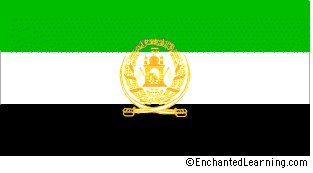Troops lower flag at Cdn camps
February 28, 2006 KANDAHAR, Afghanistan (CP) - The Maple Leaf is coming down at Canadian military installations in Afghanistan.
KANDAHAR, Afghanistan (CP) - The Maple Leaf is coming down at Canadian military installations in Afghanistan.
Commanders of Operation Enduring Freedom have asked coalition troops to lower their national flags and fly only the black-red-green of Afghanistan in an effort to put Afghan colours on forces bolstering the national government.
Canada has decided to comply with the request, citing "cultural sensitivity."
"This is not Canada, this is the Islamic Republic of Afghanistan," said Brig.-Gen. David Fraser, head of the Canadian contingent and the multinational brigade in southern Afghanistan.
"We've got to respect their cultures and traditions and be respectful that they invited us here. I think it's only fitting we fly their flag."
Fraser, officially made head of the multinational brigade for southern Afghanistan on Tuesday in a ceremony at the main air base outside Kandahar, said there is one team behind international efforts to pacify Afghanistan and that it should unite under one flag.
As Fraser was installed, soldiers at the small camp housing the Canadian provincial reconstruction team in downtown Kandahar a few kilometres away lowered the Maple Leaf in a dignified ceremony.
"It goes back to the cultural sensitivity training we did back in Canada," Fraser said. "We're in support of the Afghans. They're leading this mission."
Fraser said small Canadian flags on the side of vehicles and the tiny ones on soldiers' shoulders can remain.
For years, coalition and NATO military leaders have tried to polish the image of the Afghan government by insisting local authorities regularly lead operations with only the backup of international troops.
Despite improvements in training and equipment, the reality on the ground is often far different. International soldiers often pick up the slack for under-paid and poorly trained Afghan police and troops, although Afghans take the bulk of the casualties from insurgent attacks.
U.S. Maj.-Gen. Benjamin Freakley, the coalition operational commander who asked contributing countries to lower their flags, said the international community needs to build institutions like the Afghan National Army and Afghan National Police. Raising the Afghan flag as frequently as possible can only help the effort.
"We're trying to make subtle transitional moves to help the people of Afghanistan fend for themselves," he said.
Freakley said some U.S.-run compounds hosting international troops fly a dozen flags from various coalition countries.
He said the U.S. has a tradition of flying only one flag at military installations.
Contributing nations will understand, according to Freakley. "In no way is it intended to suppress any nationalistic pride, commitment or investment in the nation of Afghanistan," he said.
source
The Current Flag of Afghanistan
The flag of Afghanistan is composed of three equal vertical bars of black, red, and green, with the yellow coat of arms of Afghanistan in the center; this flag is known as the "King's flag." Each bar is twice as long as it is wide. The coat of arms depicts part of a mosque, sheaves of wheat, two banners, the date 1371 (A.D. 1992), which is the date of the Mujahideen victory, and an Arabic inscription that reads, "There is no God but Allah and Muhammed is his messenger."
This black, red, and green flag was flown in Afghanistan from 1930 until 1973. It was again flown over the presidential palace in Kabul on February 5, 2002, in a ceremony led by interim Afghan leader Hamid Karzai. This flag replaced the flag of the overthrown Taliban. The Old Flag of Afghanistan
The Old Flag of Afghanistan
Afghanistan's old flag was adopted on December 2, 1992, after the Mujahideen (fundamentalist Muslim fighters) won a civil war against the government that formed after the Soviet Union had pulled out of Afghanistan in 1989.
The old flag of Afghanistan is composed of three equal horizontal bars of green, white, and black. Green symbolizes Islam. In the center is the coat of arms of Afghanistan, pictured in yellow. The arms depict two curved swords, part of a mosque, wheat, two banners, the date 1371 (A.D. 1992), which is the date of the mujahideen victory, and an Arabic inscription that reads, "There is no God but Allah and Muhammed is his messenger."
source
Tuesday, February 28, 2006
the flag of the country!
Posted by audacious at 28.2.06
Subscribe to:
Post Comments
(Atom)










































0 comments:
Post a Comment